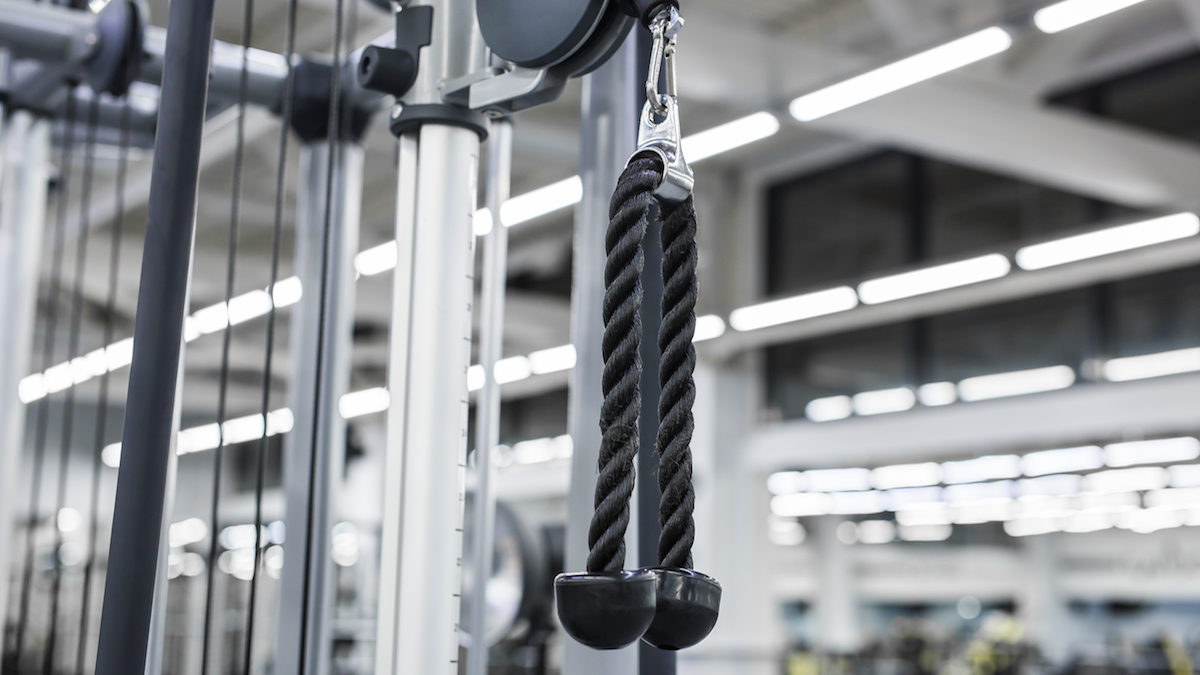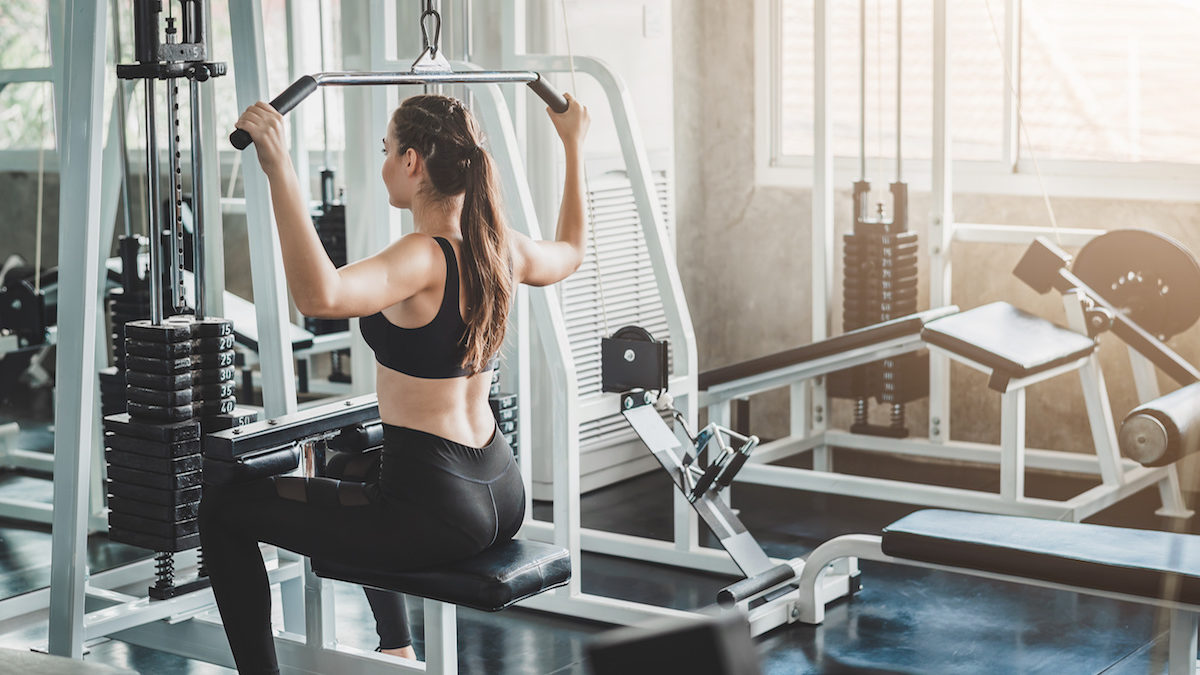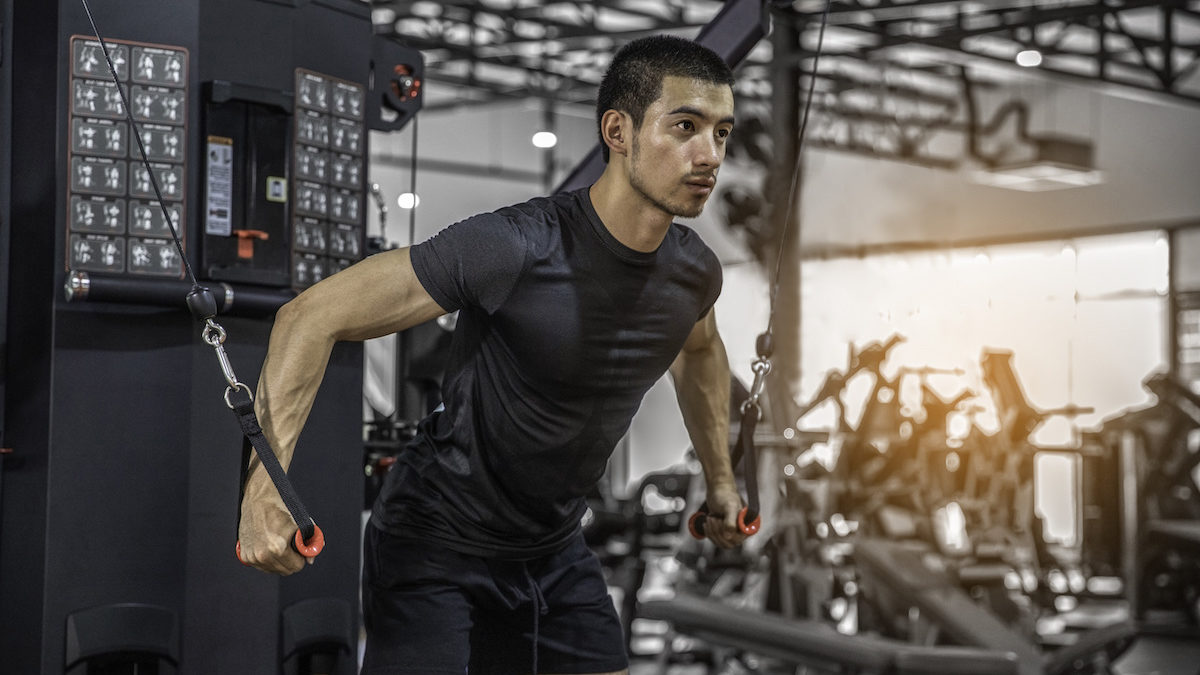Why You Should Build Your Next Workout Around the Cable Machine

It’s a well-trodden route; into the gym, bagsy a bench, and straight onto the weights rack you go. After all, free weights have long been heralded as the number one option when it comes to resistance training. But there’s an easier, less busy option: the cable machine.
Here personal trainer and founder of The Lean Tribe, Ed Griffiths, breaks down five reasons to build a workout around the cable machine, along with a guide to the attachments to use and the exercises every gym-goer should have in their arsenal.
5 Reasons To Build A Workout Around The Cable Machine
No Time For Time-Wasting
Like many people, I lead a pretty busy lifestyle, so making my workouts time efficient is a must. Luckily, cable machines are among the quickest pieces of equipment to set up and use. Choose the weight, slide the pin in, adjust the height of the pulley if you need to, and you’re good to go within a matter of seconds.
Conserve Energy
There’s no heavy lifting involved in the set up with cables, so you can conserve all your energy for the working sets. If I’m using heavy free weights I sometimes have to lug them halfway across the room to the closest bench. Then I’ve got to get them into position to actually perform the exercises. It may not seem like much, but you’re burning through your energy which could be harnessed elsewhere.
Safer Than Free Weights
Cables are a lot safer to use. With free weights you can have a lot of weight stacked over your head or body. This is fine until you get to a stage where you ideally need a spotter to push yourself and achieve progressive overload, which isn’t always convenient.
Cables use a number of pulleys to offset you having to pull or push directly against the force of gravity, which negates the risk factor of dropping weights on you.
Plus, due to the pulley system set up with cables offering more fluidity and less risk of dropping weights, it’s ideal for anyone who is injury prone. With cable exercises you’re not pushing or pulling directly against the force of gravity, which means you reduce the amount of stress placed on your joints.

Quick Adjust
With free weights you can only lift the weights up and down and you have to change the position of your body to work different muscle groups. With cables on the other hand, you can adjust the direction you’ll apply force by easily adjusting the pulley heights or positions. This allows you to easily lift through multiple planes of motion.
Work Your Full Body In Just One Spot
You get a lot more fluidity and stability in the movement with cables compared to free weights, plus with just one cable machine and some attachments you can perform hundreds of exercises and work your whole body without having to go anywhere else on the gym floor.
A Guide To Cable Machine Attachments
Here is a non-exhaustive list of the different attachments you can use on a cable machine and the exercises that go with each.
Cable rope attachment or V Bar attachment: tricep pushdowns, face pulls, rope curls, overhead extensions, weighted crunches, cable pull through (to hit glutes), straight arm pulldown.
Straight Bar attachment / Curl Bar: straight arm pulldown, bicep curl, shrugs, upright rows, rows.
D Handles / Stirrup Handles: chest fly, chest press, crossovers, shoulder press, lateral raise, front raise, curls, rows, lat pulldown, tricep kickbacks, wood chops. Can be used two at a time or can train single-sided.
Double D Handles attachment: close grip lat pulldown, rows.
Lat Pulldown attachment: lat pulldown, and all of the exercises mentioned for the straight bar attachment.
Ankle Straps: hamstring curl, hip abduction, hip adduction, leg extension, donkey kicks, weighted leg raises.

6 Cable Machine Exercises Every Gym-Goer Should Know
Leaning Lateral Raise
Attachment: Use D handle attachment.
Technique: Stand next to a cable machine with the handle attachment on the lowest setting. With your outside arm, reach across your body, grab the handle and raise your arm up to shoulder height, then lower the weight back down, and repeat.
Key Tip: Hold onto a stable anchor point — the cable machine will do — and lean away slightly. This puts the deltoid under tension for a greater portion of the range of motion.
High Cable Curls
Attachment: Use D handle.
Technique: Attach D handles high on the pulley on either side of a cable crossover station. Stand in the middle of the station, grab the handles, and keeping your upper arm in a fixed position, curl the handles while squeezing your biceps at the top of the contraction.
Key Tip: Don’t go too heavy on this one, if you go too heavy you’ll notice your elbows wanting to pull inwards which is your body recruiting your chest and shoulders to compensate.
Lat Pulldown Overhand And Underhand Grips
Attachment: Lat Pulldown
Technique: Grab the bar with a wide grip. Pull the bar down until it is level with the chin. Squeeze the shoulder blades together while maintaining square shoulders. As you slowly return the bar to the start be sure not to let the weight plate crash down.
Key Tip: Perform 8-12 reps with an overhand grip and then superset with 8-12 reps with a closer underhand grip. You’ll hit your back and biceps nicely while building up killer forearm strength.

Cable Tricep Kickbacks
Attachment: I prefer using no attachments for this. Just hold onto the rubber ball fitting at the end of the cable.
Technique: Face the cable machine and grab the cables with the opposite hands so they are crossing. Pulley should be mid height. Bend forward keeping back straight. Keep your upper arms in a fixed position and extend your triceps.
Key Tip: Steady as you go on this one, it’s a burner.
Chest Fly
Attachment: Use D handles.
Technique: Stand in the middle of a cable machine, holding a D-handle attached to the high pulley in each hand
As you keep your chest up and with bend in your elbows bring your hands around in front of your body.
Key Tip: A great one for building a wider chest, instead of crossing my hands over at the bottom of the movement, I prefer bringing my wrists together and squeezing my chest in a contraction for a couple of seconds.

Cable Pull Through
Attachment: Use rope, pulley at low setting.
Technique: Face away from the cable machine and grab the handles of the rope pulley between your legs. Walk forward a few steps and bend forward at the hips, keeping your knees slightly bent. Push your hips forward and slowly straighten out your legs, while lifting your arms up to just below shoulder height.
Key Tip: This is an underrated exercise to build a strong posterior chain (mainly your glutes, hamstrings and lower back) and master your hip hinging technique. Keep your spine neutral throughout and imagine there’s a big button behind you that you want your bum to press as you hinge forward. Push your bum back until you feel a good stretch in your hamstrings.


















